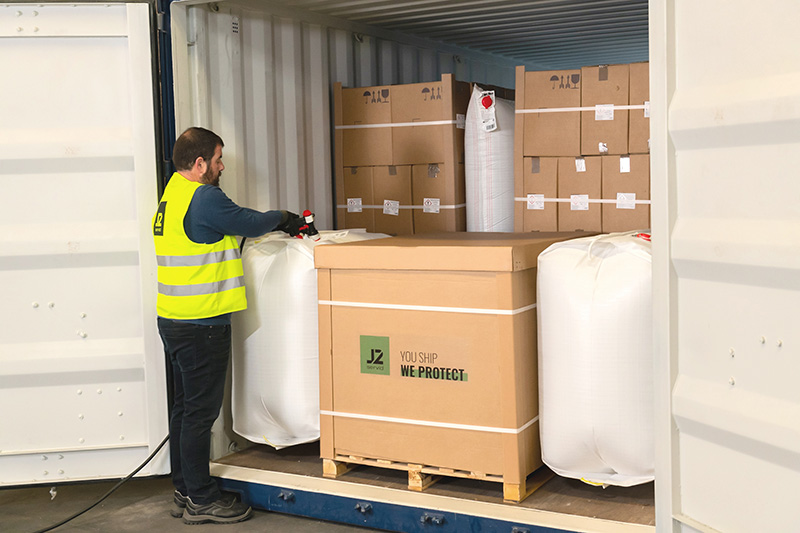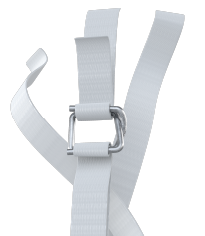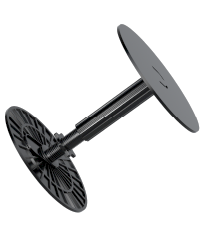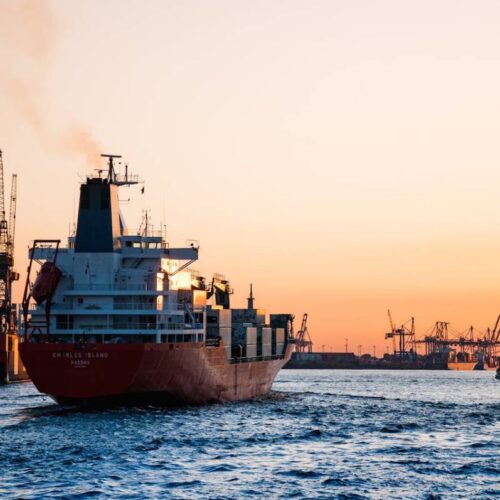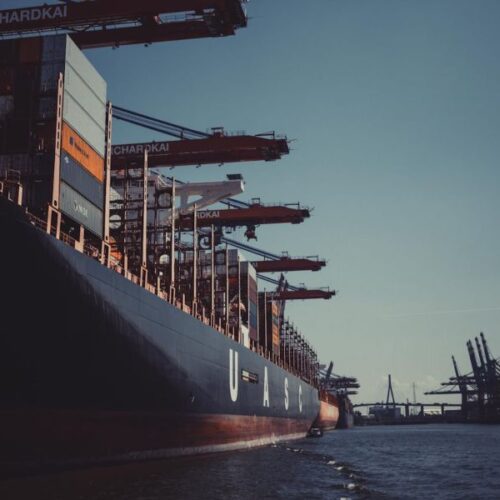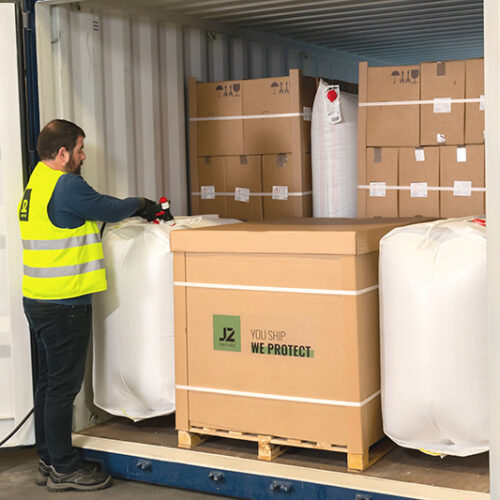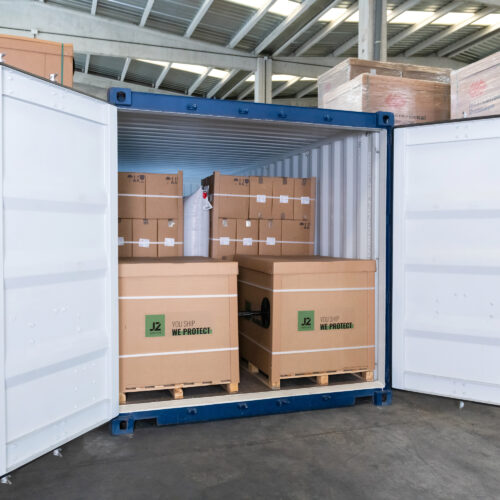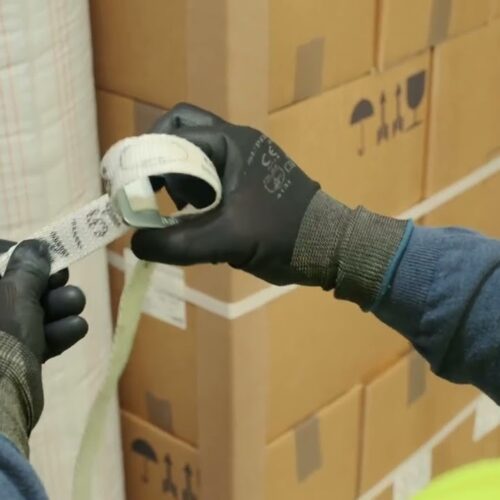The securing and stowage of cargo in the transport of goods is crucial to ensure safety during the movement of products. Correct cargo handling reduces the risk of accidents and damage to the goods, as well as to the operators handling them. The following will explain the differences between load securing and load stowage, and the most common methods used in each process.
Load securing
Load securing refers to the process of securing products to the transport platform to prevent sudden movements during transport. This is achieved through the use of straps, turnbuckles or other fasteners that hold the products in place. Load securing is especially important in cargo vehicles, where the risk of goods shifting increases.
Load stowage
On the other hand, cargo stowage refers to the process of organizing and distributing goods within the transport vehicle in an efficient and safe manner. Proper stowage ensures that the cargo is balanced and evenly distributed to avoid tipping or imbalances that could cause damage to the goods or the vehicle.
Methods
There are several common methods for securing goods and stowing cargo, including:
Inflatable bags. The lashing system with inflatable bags, i.e. air bags placed between the cargo and the container walls to prevent movement during transport, is one of the most widely used. These bags are ideal for cargo that is sensitive to shocks or vibrations, as they absorb impacts and protect the goods from damage.
ProBag Air Safety Sheet is the J2 system consisting of an inflatable bag that covers the entire surface of the container, 4 stainless steel carabiners with safety locking, fastened with high strength tie-down straps to reinforce the structure and increase strength, also incorporates metal buckles for adjusting and unadjusting the bag.
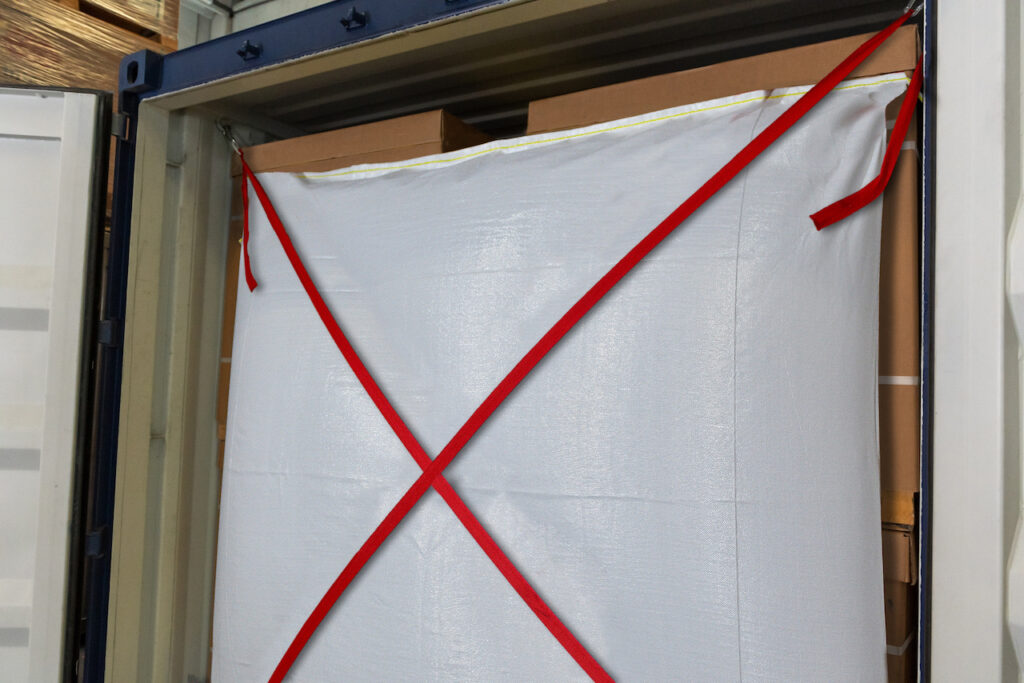
Lashing tapes. The lashing straps are mainly made of polyester and are ideal for all types of loads, whether heavy, light or fragile goods. These lashing straps are flexible, easy to handle and do not damage the load.
Our ProStrap models in different widths and polyester strengths are suitable for palletizing any type of goods.
TyGard. It is a modern system for the protection of dangerous goods in containers. It works like a safety belt, absorbing shocks and dissipating energy. It is a safe and easy to use solution for drums, Big-Bags, IBC’s, dangerous goods, explosives and all types of palletized goods. It is approved for securing cargo in sea containers by the Association of American Railroads (AAR) and complies with established cargo securing standards.
Our ProLash lashing and lashing system is one of the most complete, and is suitable for use on trucks, sea containers, ships, trains, etc. The different models are made of high quality polyester and are approved and certified by various international laboratories.
It is essential to ensure that these devices are in good condition and suitable for the cargo to be transported, as explained in the post on How to check for damage to lashing and lashing straps in stevedoring.

Load separators. They are used to divide the load into sections and prevent products from moving against each other. These separators can be made of different materials and can be adjusted or adapted to the dimensions of the goods. One easy-to-apply load separator solution is ProVoidGard, the reusable load separator. It is a solution that prevents lateral movement of the load, is applied manually without the need for tools, is easy to use and is available in different sizes. And then there is our Niupack padded cargo protection system, which is available in different shapes and sizes for many different types of use, in order to avoid the dreaded domino effect.
Cargo securing and stowage are fundamental processes in the transportation of goods to ensure safety and prevent damage to the cargo and the vehicle. Through the proper use of methods, operators can effectively secure products during transport.
It is important to follow the safety standards and recommendations established for each type of merchandise and vehicle, as well as to train operators in securing techniques and to train in stowage to prevent accidents and ensure the integrity of the cargo.

